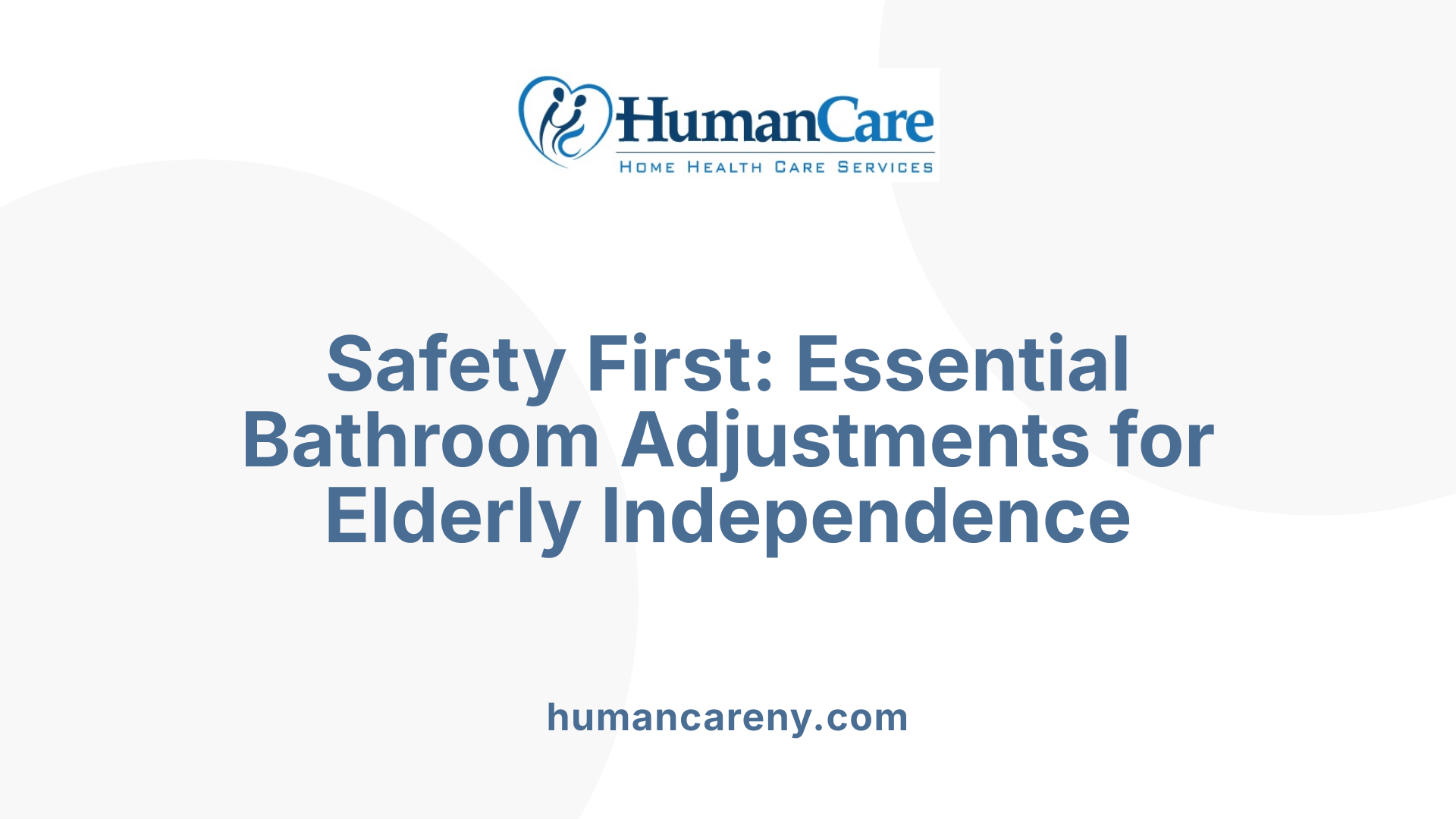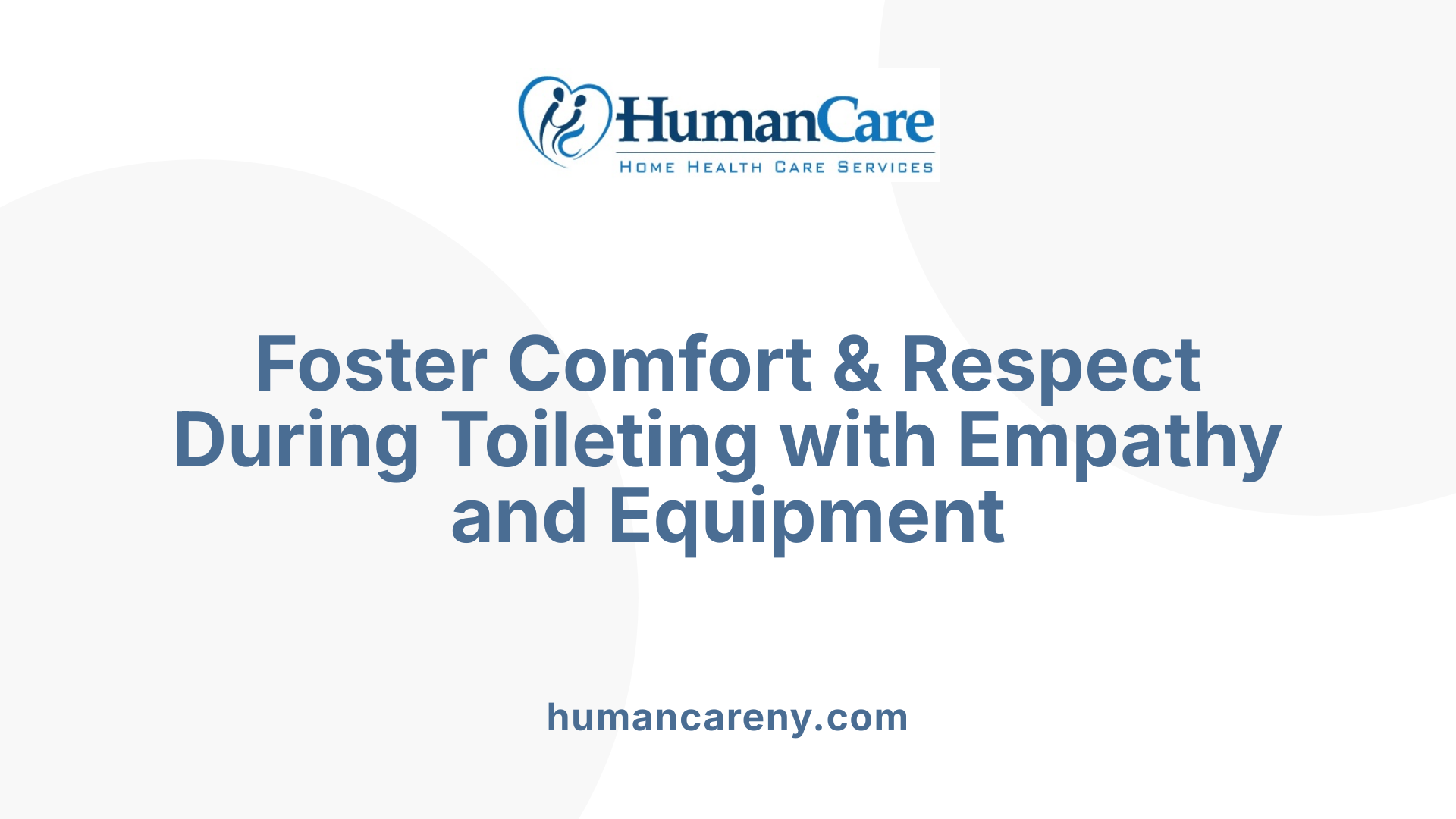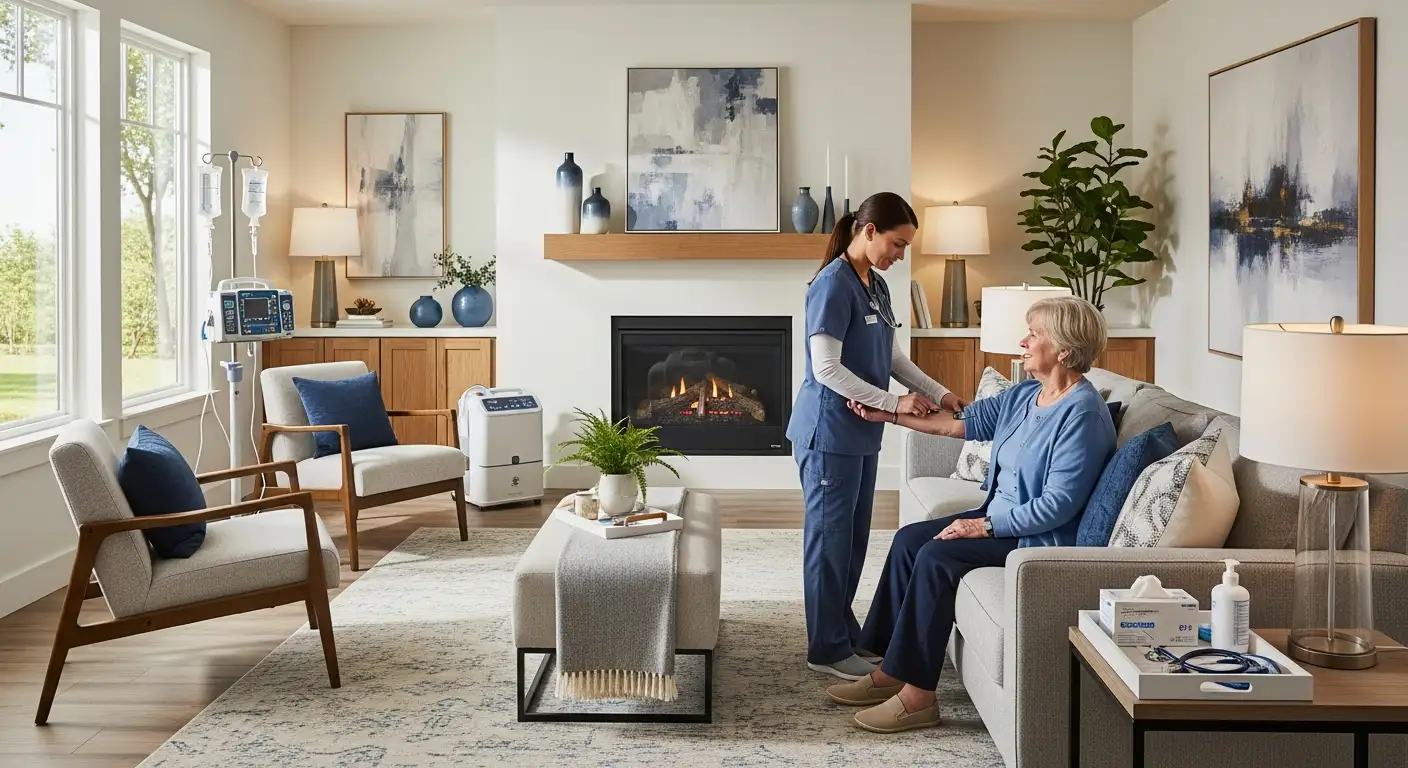Understanding the Role of Companion Care in Senior Toileting Support
Assisting seniors with toileting needs is a delicate aspect of caregiving that requires compassion, skill, and attention to safety. Companion caregivers play a vital role in ensuring older adults maintain their dignity, independence, and health during these routine activities. This article explores how caregivers support elderly toileting needs through effective techniques, environmental modifications, and respectful communication, ultimately fostering a safe and respectful environment for seniors.
Assessing and Preparing the Bathroom Environment
 Creating a safe and comfortable bathroom setting is essential for supporting seniors' toileting needs. This process begins with evaluating the individual’s specific requirements, including mobility, balance, cognitive status, and personal preferences. Tailoring safety solutions helps ensure the environment promotes both independence and protection.
Creating a safe and comfortable bathroom setting is essential for supporting seniors' toileting needs. This process begins with evaluating the individual’s specific requirements, including mobility, balance, cognitive status, and personal preferences. Tailoring safety solutions helps ensure the environment promotes both independence and protection.
Incorporating safety modifications like grab bars and non-slip mats significantly reduces the risk of slips and falls. Grab bars installed near the toilet and shower provide stable support, while non-slip mats on the floor enhance grip and prevent accidents. Securing loose rugs or mats prevents tripping hazards, creating a safer pathway.
Good lighting is crucial; installing bright, energy-efficient lights, perhaps with motion sensors, ensures the bathroom is well illuminated at all times. Adequate lighting helps seniors see clearly, avoiding missteps and slips, especially at night. Moreover, maintaining a clutter-free bathroom space is vital. Removing obstacles and organizing essential supplies within easy reach minimizes hazards and promotes ease of access.
Accessible storage solutions allow seniors to reach hygiene products, clothing, and assistance devices without straining or risking falls. Using contrasting colors for bathroom fixtures can also aid seniors with visual impairments, helping them identify different areas and objects easily.
Establishing a bathroom that blends safety features with accessibility measures supports seniors to remain as independent as possible while safeguarding their health and well-being. Regular assessments of these modifications ensure they continue to meet evolving needs, providing a foundation for safe and dignified toileting experiences.
Supporting Dignity and Comfort in Personal Care

How can caregivers support senior dignity and comfort during toileting activities?
Supporting the dignity and comfort of seniors during toileting involves multiple compassionate approaches. Respecting their privacy is paramount; providing private spaces and knocking before entering ensures they feel secure. Engaging seniors in decisions about their toileting routines promotes autonomy and self-esteem.
Offering the right equipment is crucial. Tools like grab bars, raised toilet seats, and non-slip mats enhance safety and independence. Incontinence products and accessible clothing, such as elastic waistbands, facilitate easier self-care and reduce discomfort.
Communication should be patient, respectful, and empathetic. Gently explaining procedures and asking for preferences helps seniors feel involved and respected. Assistance must be gentle, using proper techniques to help with sitting, standing, or hygiene tasks, always prioritizing their safety and dignity.
Maintaining cleanliness and hygiene not only prevents infections but also improves comfort. Caregivers should assist with wiping or cleaning with care, using disposable gloves and promoting proper hand hygiene afterward.
Ultimately, involving seniors in their toileting routines, listening to their needs, and creating a supportive environment help uphold their dignity. These practices foster emotional well-being and ensure that personal care remains a dignified and positive experience.
What best practices ensure respectful and compassionate caregiving?
Providing respectful care during toileting requires establishing routines, like scheduled bathroom breaks, to reduce urgency and accidents. Creating an accessible bathroom environment with grab bars, slip-resistant surfaces, good lighting, and organized supplies enables seniors to perform tasks with confidence.
Using easy-to-manage clothing, assistive devices, and incontinence management plans supports independence. Responding promptly to cues—such as signs of needing to go—shows attentiveness and respect.
Caregivers should always approach with patience, speak kindly, and give clear instructions. Privacy should be maintained throughout, and assistance should be given based on the senior’s comfort level.
Practicing good hygiene, understanding incontinence as a health issue, and avoiding rushing or forceful support improve safety and foster trust.
How do assistive devices and modifications foster dignity in toileting?
Assistive devices like raised seats, grab bars, and transfer aids significantly enhance safety and independence. They allow seniors to manage their toileting without excessive relyance on others, preserving their sense of autonomy.
Bathroom modifications—such as installing grab bars, non-slip mats, better lighting, and accessible storage—reduce fall risks and barriers to self-care. These changes make the environment more accommodating, especially for those with mobility challenges.
By enabling easier access and safer movement, these tools support a respectful approach to personal hygiene. They help seniors maintain their independence and self-respect, even as health challenges increase.
Additional Resources
For more information on maintaining dignity in toileting care, search for "Dignity-focused toileting strategies and assistive technologies." Implementing these approaches ensures that senior care remains respectful, safe, and empathetic.
Best Practices in Caregiving for Elderly Toileting

What are best practices and guidelines for caregiving in toileting for seniors?
Providing respectful, safe, and effective toileting assistance is essential in elderly care. Establishing a regular toileting routine, such as scheduled bathroom breaks every two hours, helps reduce accidents and promotes the individual's independence. This consistent schedule assures seniors feel secure and reduces urgency that might lead to falls.
Creating a safe bathroom environment is equally important. Install aids like grab bars, raised toilet seats, non-slip mats, and ensure proper lighting to decrease fall risk. Securing loose rugs, using non-slip decals, and keeping supplies within easy reach help maintain safety and support dignity.
Using accessible clothing, such as elastic waistbands, and properly positioned incontinence products simplify the process while respecting privacy. Assistive devices like bedside commodes, toilet risers, and hygiene wands support independence and hygiene.
Monitoring changing needs is critical. Recognize subtle cues such as difficulty walking, frequent bathroom trips, or signs of cognitive decline to adapt routines and support. Regular assessments by healthcare professionals can address incontinence issues, which are medical conditions requiring attention.
Communication should always be respectful and discreet. Gently guiding and supporting seniors, maintaining their privacy, and involving them in decision-making preserve dignity. Caregivers must be patient, empathetic, and well-informed about medical aspects of incontinence.
Proper hygiene routines involve cleaning from front to back, using wipes or toilet paper, and handwashing afterward. Caregivers should wear gloves and handle accidents discretely to prevent infections.
Using assistive devices boosts safety. Handrails, transfer aids, and supportive seating are valuable tools. Ensuring the bathroom setup is optimized for safety minimizes risks associated with wet floors and poor lighting.
Maintaining a supportive routine and environment, practicing respectful and gentle assistance, and staying alert to seniors' evolving needs are the foundation for quality elderly toileting care.
| Practice or Tool | Description | Additional Benefits |
|---|---|---|
| Scheduled toileting | Routine bathroom breaks | Reduces accidents, promotes independence |
| Bathroom modifications | Grab bars, non-slip mats, lighting | Prevents falls and injury |
| Assistive devices | Bedside commodes, riser seats | Facilitates movement and hygiene |
| Clothing | Elastic, easy-to-remove clothing | Simplifies dressing/undressing |
| Monitoring | Recognizing cues and health changes | Adapts care to needs |
| Hygiene products | Wipes, incontinence pads | Maintains comfort and health |
Understanding and implementing these practices can greatly enhance safety, respect, and independence in elderly toileting care. Regular collaboration with healthcare professionals ensures personalized and effective support, ultimately improving quality of life for seniors.
Collaborating with Healthcare Professionals and Support Services

What role do healthcare professionals and support services play in senior toileting care?
Healthcare professionals and support services are fundamental in managing the complex needs associated with senior toileting. They conduct thorough assessments to identify specific mobility, incontinence, or cognitive issues that may affect toileting routines. Based on these evaluations, specialists develop personalized strategies to promote safety and dignity.
Medical guidance from healthcare providers is crucial for addressing incontinence, which may involve medications, specialized hygiene products, or dietary adjustments. They also recommend appropriate assistive devices such as elevated toilet seats, bidets, commodes, grab bars, or lifts to facilitate easier and safer bathroom use.
Professional caregivers from home health agencies are trained to assist with toileting, bathing, and dressing tasks with an emphasis on safety and respect. These caregivers operate under medical supervision, which helps to prevent falls or injuries and ensures proper hygiene.
Support services further contribute by providing home modifications—installing grab bars, securing loose mats, improving lighting, and adding emergency alert systems—to make the bathroom environment safer. Programs that supply assistive technology, such as bed or chair lifts, enhance independence.
In addition, adult day centers and in-home adult health services offer daily social and health support, including help with toileting routines. These resources collectively ensure that elderly individuals receive tailored, professional assistance that meets their specific needs.
Ultimately, collaboration with healthcare providers and support services ensures the development of comprehensive plans that promote safety, preserve dignity, and encourage independence during toileting activities.
Promoting Independence with Respect and Safety
Supporting seniors with toileting needs requires a compassionate approach that combines practical support, environmental modifications, and respectful communication. Companion caregivers play a crucial role in maintaining dignity and safety, ensuring that elderly individuals receive personalized care tailored to their unique needs. By establishing routines, utilizing assistive devices, and fostering a respectful environment, caregivers help seniors retain their independence and confidence. Collaborating with healthcare professionals and continuously evaluating safety measures further enhances this support, making toileting activities safer, more dignified, and less stressful for seniors. Ultimately, compassionate caregiving not only improves physical health but also upholds the emotional and psychological well-being of seniors, allowing them to live with comfort, respect, and autonomy.
References
- How to Assist a Loved One with Toileting | Tips for Bathroom Help
- How to Help Seniors Who Need Assistance Toileting
- How Can You Support an Aging Parent With Bathroom Assistance?
- Personal Care at Home-Supporting Seniors with Toileting
- How to Help an Elderly Person with Toileting - Griswold Home Care
- Helping Seniors With Common Bathroom Issues
- Ways Companion Care at Home Helps Seniors to Avoid Falls



